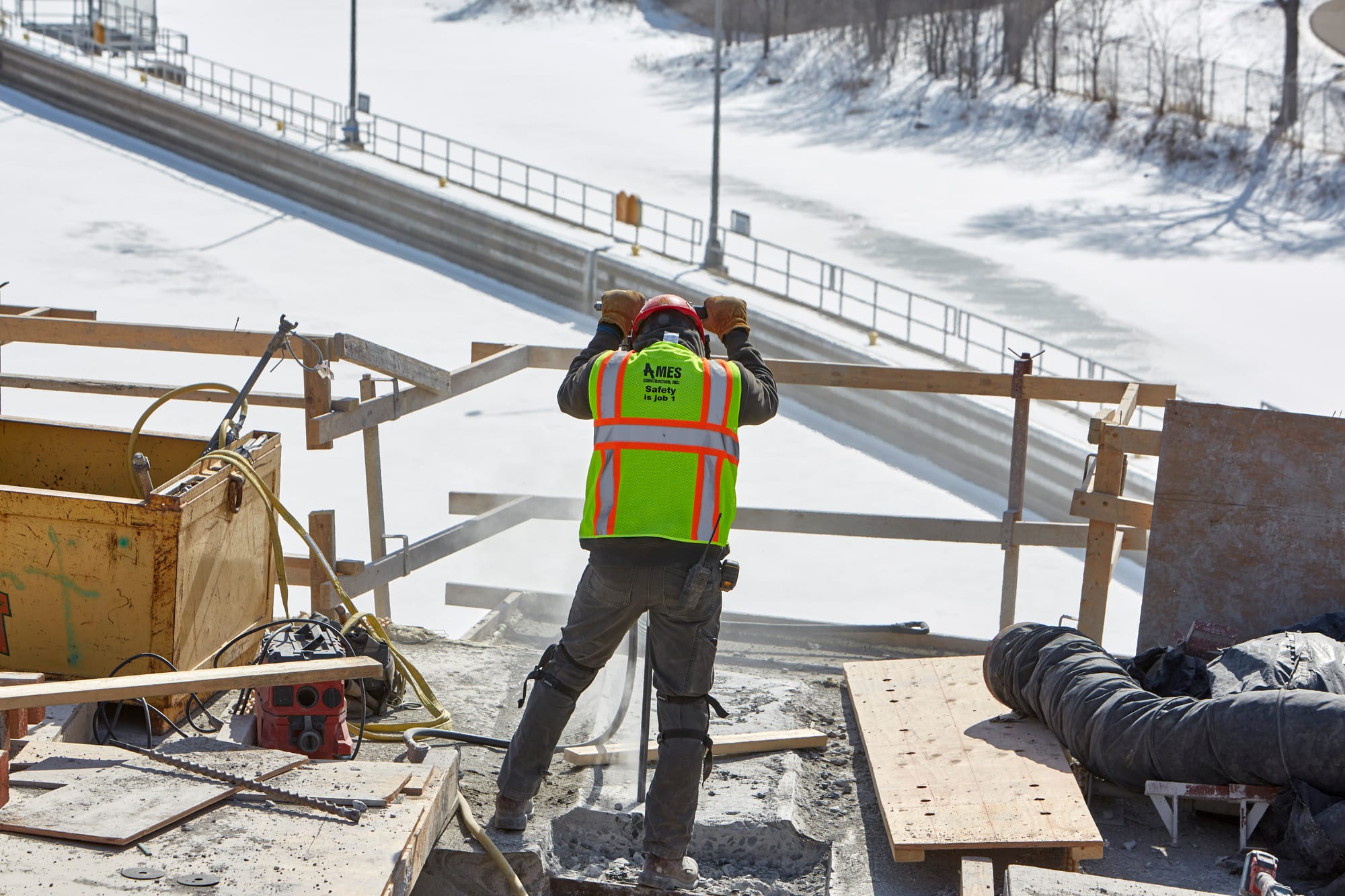Thank you to all Ames coworkers for a safe and successful year in 2023! We also send out a big thanks to the families that support our team members while they are at work.—Zach Huhmann, Director of Safety and Health

Winter weather hazards pose unique challenges. Here are some tips on how to manage them.
1. Winter PPE
Multiple loose-fitting layers, hard-hat liners, thermal socks, thermal gloves or gloves large enough to fit a glove liner, and work boots with good tread are must-haves. Avoid wearing a cotton T-shirt as a base layer, since cotton absorbs moisture (sweat). A thin wool, silk, or synthetic layer next to the skin is best.
2. Recognizing hypothermia and frostbite ❄
Working outside in the cold, especially if it’s also wet or windy, can lower the body’s core temperature and/or freeze the skin. Be aware of the risks and warning signs of hypothermia and frostbite and what to do in the event of trouble.
3. The importance of warming up
Construction is physical work. Just as athletes warm up before exercise, construction workers warm up too, especially if they’re about to work in cold temperatures. Take part in any morning group warm-ups or stretches, and remind everyone to join in.
4. Carbon monoxide (CO) poisoning
Many pieces of fuel-burning equipment can emit this potentially deadly gas, including fuel-powered heaters and generators. If this equipment must be used indoors or in confined spaces, ensure adequate ventilation and monitor CO levels with a CO monitor. Wear appropriate PPE, which may mean a supplied-air respirator or a self-contained breathing apparatus (SCBA). Know the symptoms of CO poisoning as well. Initial symptoms may include chest tightness, headache, fatigue, dizziness, drowsiness, or nausea.
5. Fire safety 🔥
Temporary heating equipment and the fuel used to power it increases the risk of fire on a construction site. Make sure the site has an adequate number of fire extinguishers and that everyone knows where they are. Be sure that everyone on the site knows the procedures for reporting a fire and evacuating the site.
6. Safe shoveling
If you must shovel by hand, warm up first. Push the snow instead of lifting it, or scoop small amounts at a time, lifting with the legs, keeping the back straight, and avoiding twisting.
7. Power line ⚡️
Contacting downed, energized power lines can cause electrocution. So can touching objects that are touching these lines.
8. Off-the-job
Simply getting to and from work can be dangerous in bad weather. Drive defensively, leave extra space between your vehicle and the vehicle in front of you, avoid braking on slippery roads, steer in the direction you want the front of the car to go during a skid, and keep water, a shovel, a blanket, road salt or sand, and other emergency supplies in the trunk just in case.
9. Fall protection
Falls are the number one cause of death in construction, and slippery conditions make them more likely. Use a personal fall arrest system when necessary and make sure safety belts are properly tied off.
10. Three points of contact
Whether you are climbing a ladder or getting in or out of the cab of your equipment, the “three points of contact” rule can help eliminate falls.
11. Near misses
Near misses can happen in any season—and when they do happen, they should be treated as warnings, since they are usually the result of unsafe conditions or behaviors. Know the process for reporting them.
